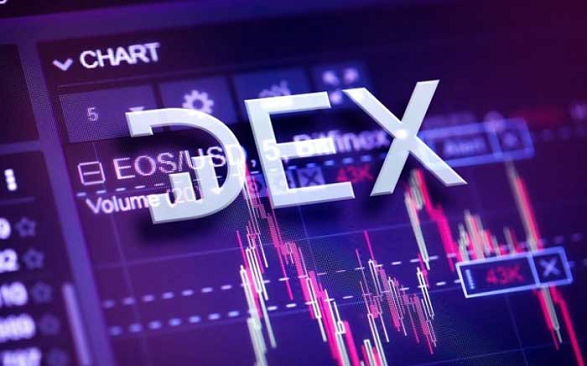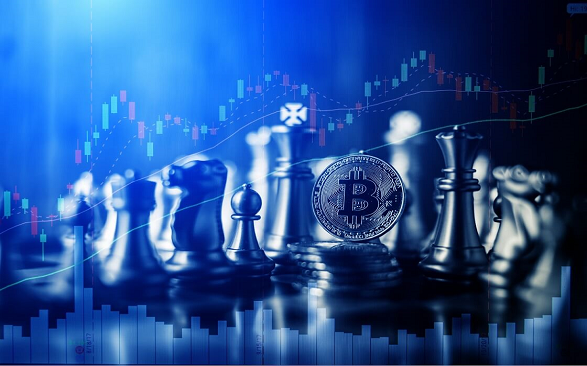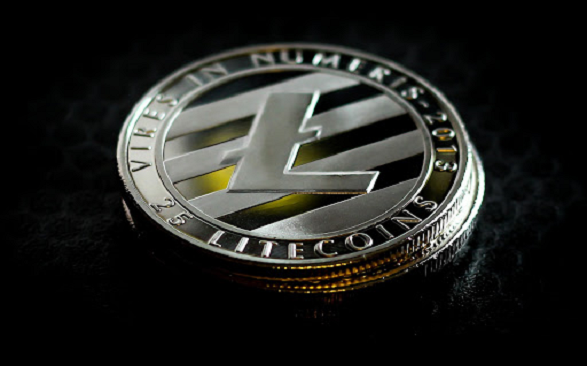Introduction
Decentralized exchanges or DEXs are a type of cryptocurrency exchange that operate on a decentralized blockchain network. This means that on a decentralized exchange, there is no central authority or intermediary controlling the trading of assets. Instead, trades are executed directly between users through smart contracts.
Advantages of DEXs
One of the key benefits of DEXs is that they are considered to be more secure than centralized exchanges. This is because there is no central point of failure and user funds are stored in smart contracts rather than in a central location. This makes it much more difficult for hackers to steal user funds. Additionally, decentralized exchanges offer more privacy and autonomy, as users remain in full control of their own private keys and are not required to go through a central authority to trade their assets.
Another benefit of DEXs is that they allow for the trading of a wider range of assets, as they are not constrained by the regulatory requirements that centralized exchanges must adhere to. Additionally, DEXs often have lower trading fees, because they do not have the same operational expenses as centralized exchanges.
Disadvantages of DEXs
Decentralized exchanges have certain disadvantages that should be considered before using one. One of the main disadvantages is liquidity. Decentralized exchanges are not as widely used as centralized exchanges currently are. Consequently, decentralized exchanges may have lower trading volumes and liquidity, sometimes making it more difficult to find buyers or sellers for certain assets, and resulting in wider bid-ask spreads and higher slippage. This can lead to more volatile prices, and in some cases, traders might not be able to execute their trades at the desired price or even at all.
Another disadvantage of decentralized exchanges is the user experience. Decentralized exchanges often have less user-friendly interfaces than centralized exchanges, making it difficult for novice traders to navigate. Additionally, decentralized exchanges can have slower trade execution times, due to the need for smart contract execution and blockchain confirmations. This can be frustrating for traders and can also make it more difficult to take advantage of market opportunities.
A major concern for decentralized exchanges is smart contract risk. As the smart contract systems of decentralized exchanges are complex and new, they may be prone to bugs and exploits that could cause the loss of funds. Users may lose their funds due to errors in the smart contract’s codes that allow hackers to steal their funds. This is a significant risk, and traders should be aware of this when using decentralized exchanges.
Decentralized exchanges also lack regulatory compliance. As decentralized exchanges are decentralized, they are not subject to the same regulatory requirements as centralized exchanges. This can make it more difficult for regulators to protect consumers and safeguard investors. Governments also typically struggle with enforcing taxes or other legal requirements. Additionally, the (relative) lack of regulatory oversight means that decentralized exchanges are generally more susceptible to money laundering or other illegal activities.
Here are the top 5 decentralized crypto exchanges (DEXs) that you should know
dYdX
dYdX is a decentralized exchange that allows users to trade a variety of digital assets in a trustless and decentralized manner on the Ethereum blockchain. The platform is built on the Ethereum blockchain and utilizes smart contracts to facilitate trades and other operations.
One of the key features of dYdX is that it allows for margin trading, a form of trading that allows users to trade with leverage. Leverage means that users can trade with more capital than they actually have, effectively amplifying their potential gains or losses. This can be useful for experienced traders who want to take on more risk but it can also be quite risky for inexperienced traders.
Another key feature of dYdX is short selling, a trading strategy that allows traders to bet against the price of an asset. With short selling, a trader borrows an asset, sells it, and then buys it back at a later date (hopefully at a lower price) in order to make a profit. Short selling is a riskier strategy than traditional buying and holding but it can be a powerful tool for experienced traders.
In addition to margin trading and short selling, dYdX also allows users to trade on leveraged positions and provide liquidity in a decentralized way.
When trading on dYdX, users are in control of their own private keys and funds. This means that there is no central point of control or custody of assets, which is one of the main benefits of decentralized exchanges over centralized exchanges. Additionally, because dYdX is built on the Ethereum blockchain, it is transparent and open-source, allowing anyone to review and audit the code.
In order to use dYdX effectively, users need to have a good understanding of the platform’s mechanics, and the risks and benefits of different trading strategies.
Website: https://dydx.exchange/
Uniswap (V3)
Uniswap V3 is the third version of the popular Uniswap decentralized exchange built on the Ethereum blockchain. It is an upgrade to the previous versions of Uniswap (V1 and V2) and introduces several new features and improvements to the platform.
One of the main new features in Uniswap V3 is the introduction of liquidity pools. With liquidity pools, Uniswap allows users to provide liquidity to the exchange by depositing assets into a pool in exchange for a proportional share of the pool’s liquidity token. This allows users to earn trading fees and liquidity provider (LP) rewards for providing liquidity to the platform.
Another key feature of Uniswap V3 is the introduction of “optimized market makers” (OMMs). OMMs are a new type of smart contract that allows traders to access liquidity pools in a more efficient way by using a new pricing model that reduces slippage. This feature improves the accuracy of the price of an asset.
Other features of Uniswap V3 include the following:
- Pathfinding which improves the efficiency of trades by allowing users to find the best trade path for a specific token pair
- Gas abstraction which reduces the amount of gas needed for a trade
- Support for new token standards, including ERC-1155 and ERC-998
Uniswap V3 also offers an improved user interface and user experience, with faster trade execution times and lower transaction costs.
Website: https://uniswap.org/
Curve Finance
Curve Finance is a decentralized finance (DeFi) platform built on the Ethereum blockchain that aims to provide stablecoin liquidity for traders and yield for investors.
The platform uses a ‘liquidity pool’ model, in which users can deposit various stablecoins (such as DAI, USDC, and USDT) into a pool. These pools are then used to provide liquidity for trading pairs of other stablecoins, such as trading USDC for DAI for example. This allows users to trade stablecoins with low slippage and high liquidity, while also earning a yield on their deposited assets.
One key feature of Curve is its low trading fees, designed to be less than 0.1% of the trade amount. This is achieved through the use of a constant function market maker (CMM) algorithm, designed to provide high liquidity while also keeping trading fees low.
In addition to providing liquidity for stablecoin trading, Curve also offers yield farming opportunities for users. Yield farming refers to the practice of depositing assets into liquidity pools and receiving a proportionate share of the platform’s transaction fees as a reward. This allows users to earn a return on their deposited assets by providing liquidity to the platform.
The Curve Finance platform also has its own token called CRV which can be staked to provide liquidity in the pools. CRV enables users to earn rewards in proportion to their stake and also vote on protocol changes.
As with any DeFi platform, it’s important to understand the risks involved with using Curve, such as the risk of smart-contract bugs and the risk of impermanent loss. Impermanent loss means the loss one suffers due to the change in the price of an asset from when the asset was deposited in a pool and when the asset is eventually withdrawn.
Website: https://curve.fi/
Kine Protocol
Kine Protocol is a decentralized exchange built on the Ethereum blockchain that aims to provide a more accessible, user-friendly trading experience for non-custodial trading of digital assets.
The protocol uses a limit order book model. It allows users to place orders to buy or sell assets at specific prices rather than having to trade at the current market price. This allows for greater price discovery and potentially better prices for traders. The order book is maintained by a decentralized network of liquidity providers who earn a fee for providing liquidity to the exchange.
One of the key features of the Kine Protocol is its use of synthetic assets to represent underlying assets. Synthetic assets are essentially tokenized derivatives whose value is connected to another asset via a contract. In that case, we can trade the movement of that value using trading products like futures. Synthetic assets may not have an existing ERC-20 token or smart contract. Users can trade a wide variety of assets, including both cryptocurrencies and traditional financial assets such as stocks and commodities, without the need for these assets to be tokenized first.
Similarly, Kine Protocol also allows users to create and manage their own synthetic assets, known as Kine Creators.This can be used to create a synthetic version of any underlying asset, even if it is not tokenized yet. This allows for the creation of new investment opportunities and the ability to trade in assets that would otherwise be difficult or impossible to trade on the blockchain.
The Kine Protocol also implements various safety measures to protect users’ assets. This includes allowing users to set a maximum slippage tolerance, which automatically cancels the order if it would result in a price movement greater than the set tolerance.
Lastly, Kine Protocol The platform also has its own token called KINE. KINE, which can be staked by liquidity providers to earn a share of the trading fees on the exchange. It can also be staked, and also by users to access lower trading fees.
Website: http://www.kine.io/
PancakeSwap
PancakeSwap is a decentralized exchange built on the Binance Smart Chain (BSC) that allows for the trading of digital assets in a trustless and decentralized manner. It is considered as one of the most popular decentralized exchangesin the ecosystem of Binance Smart Chain.
PancakeSwap uses an automated market maker (AMM) model, in which users can trade assets without the need for an order book or traditional market maker. Instead, assets are traded against a liquidity pool, which is composed of a basket of assets. The liquidity pool uses a constant product algorithm to maintain a constant product of the asset prices, allowing for price discovery and liquidity for trading pairs.
PancakeSwap allows users to trade a variety of assets, including cryptocurrencies, NFTs, and other digital assets that are built on the Binance Smart Chain. Additionally, PancakeSwap has its own token, called CAKE, which can be staked by liquidity providers to earn a share of the trading fees on the exchange. CAKE is also used by PancakeSwap users to access lower trading fees.
One of the key features of PancakeSwap is its low trading fees and fast transaction confirmations. This is possible due to the fast block generation of Binance Smart Chain. And this makes it a popular choice among traders who want to trade quickly and at a low cost.
Lastly, PancakeSwap allows for yield farming, which allows users to earn a return on their deposited assets by providing liquidity to the platform.
Website: https://pancakeswap.finance/
Conclusion
In summary, decentralized exchanges offer secure and autonomous trading experience for users. They also offer a wider range of trading options. But decentralized exchanges are typically not as user-friendly as centralized exchanges. Also, decentralized exchanges have lower of liquidity compared to centralized exchanges. They also have a number of risks that should be taken into account before trading on them. One common risk is that since users are their own bank, users have absolute control over the safety and security of their funds. There is no customer care or some CEO on decentralized exchanges.
The use of any decentralized exchange carries inherent risks such as smart-contract vulnerabilities, hacking attempts, and flash loan attacks which could result in significant financial loss. It is always important to conduct your own research and assess if a decentralized exchange suits your needs and if you are comfortable with the risks. Before you use any decentralized exchange to conduct any trades or store any funds, consider all risks and be prepared for any eventualities. Risk management is key.
Victor Solomon is a Technical Analyst who is also knowledgeable about various aspects of blockchain and cryptocurrency.




